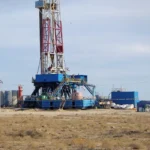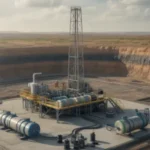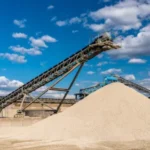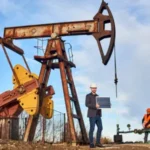The Fundamentals of Sand Management in Oil and Gas Production: Why It Matters for Well Longevity

Sand management is a frontline priority in oil and gas production. Uncontrolled sand flow can erode equipment, clog facilities and trigger costly shutdowns. It also shortens well life and inflates operating expenses.
This blog breaks down the fundamentals – what causes sand production, why it’s a threat to well integrity and how proven techniques and services can keep it in check. Designed for oilfield engineers, operators and procurement teams, this guide lays out practical strategies to protect assets and keep production on track.
What is Sand Management?
Sand management refers to the set of engineered strategies used to control or reduce the flow of sand and solid particles from reservoirs during oil and gas production. These particles can be naturally present in unconsolidated formations or mobilized by pressure changes and fluid movement into the wellbore.
Once inside, they can erode downhole tools, clog separators and damage surface equipment leading to downtime and inflated maintenance costs. Effective sand management helps maintain well integrity, stabilize production rates and extend equipment life.
Sand management techniques range from mechanical barriers to chemical consolidation, each selected based on reservoir conditions and production goals.
Why is Sand Management Important in Oil and Gas?
Sand production is a direct threat to well performance, equipment integrity and operational budgets. Without a proactive sand management strategy, operators risk early well decline and costly interventions.
Impact of Sand Production on Wells and Facilities
Sand enters the wellbore when reservoir rock fails under extraction forces. This failure is triggered by pressure drawdown and fluid movement causing loose grains to migrate. Once inside the system, sand causes:
- Abrasive wear on pipes, valves, pumps and separators
- Blockages in production tubing that restrict flow and trigger shut ins
- Frequent repairs and replacements that inflate maintenance budgets
- Safety risks from well integrity loss and potential leaks
Effective sand management minimizes these risks, protects infrastructure and keeps production stable.
Causes of Sand Production
Sand production is driven by a mix of reservoir conditions and operational stressors:
- High fluid velocity and pressure drawdown destabilize formation grains
- Heavy oil viscosity increases drag forces, pulling sand into the flow
- Rising water cut reduces cohesion between grains making them mobile
- Natural fractures and weak formations offer easy pathways for sand migration
Understanding these triggers helps engineers design control strategies that match reservoir behavior and production goals.
Sand Management Strategies
Sand control is not one size fits all. Operators rely on a mix of downhole and surface techniques to keep sand out of the flow path, protect equipment and maintain production targets.
Sand Control (Mechanical Methods)
Mechanical sand control methods are the backbone of most field applications. These physical barriers are designed to block sand while allowing hydrocarbons to flow:
- Gravel packs: Sized gravel is packed around a screen to trap sand before it enters the wellbore
- Sand screens: Perforated or slotted liners act as filters preventing sand migration
- Frac packs: Combine hydraulic fracturing with gravel packing to enhance flow and sand control
- Expandable screens: These advanced screens expand to fit tightly against the wellbore offering high contact and filtration efficiency
These technologies are widely deployed across unconsolidated formations and remain core components of sand management services.
Production Rate Control
Managing drawdown pressure through controlled production rates helps reduce sand detachment. Choking back flow limits the stress on formation grains but it comes with a trade off – lower output. This method is often used in marginal wells or early production phases.
Sand Removal (Surface Facilities Management)
When sand does make it to the surface, separation systems step in to protect downstream assets:
- High pressure wellhead desanders remove sand upstream before it reaches critical equipment
- Cyclonic sand traps use centrifugal force to spin out solids from the flow stream
- Sand jetting systems installed in separators flush out accumulated sand without interrupting production
These systems are essential for maintaining uptime and reducing wear on pumps, valves and separators.
Chemical Sand Management
Chemical methods like resin injection and sand consolidation bind loose grains together improving formation stability. These treatments are typically used alongside mechanical controls to reinforce weak zones or extend the life of existing completions.
Role of Sand Management Services
Sand management services bring together field tested techniques and data driven tools to keep production stable and wells protected. These services are built around reservoir specific strategies that combine prediction, control and recovery.
- Prediction and Monitoring: Advanced modeling and real time sensors help forecast sand risks and track production trends. Fiber optic and machine learning systems are now used to detect early signs of formation failure.
- Customized Completion Designs: Engineers design completions that balance sand control with flow efficiency. Gravel packs, screens and frac packs are selected based on formation type and production goals.
- Surface Facility Design: Facilities are equipped with desanders, cyclonic separators and disposal systems to handle produced solids without interrupting flow.
- Ongoing Monitoring and Maintenance: Continuous tracking of sand rates helps operators plan interventions before damage occurs, reducing downtime and extending equipment life
Benefits of Effective Sand Management
A well executed sand management program delivers measurable gains across production, safety and cost control. Operators who prioritize it see stronger well performance and fewer disruptions. Sand management:
- Extends well life by reducing erosion and wear on downhole and surface equipment
- Maintains steady production rates with fewer flow interruptions caused by sand blockages
- Cuts operational and maintenance costs by avoiding frequent repairs and replacements
- Supports safety and environmental compliance by controlling solids disposal and minimizing leak risks
These benefits are backed by field data and service benchmarks across multiple basins. Sand management is not just a technical fix but a production safeguard.
Conclusion
Sand management is a frontline requirement for sustainable oil and gas production. Without it, operators face rising costs, equipment failure and early well decline. Applying advanced mechanical barriers, chemical consolidation and real time monitoring helps control sand risks and extend well life.
Sunita Hydrocolloids Inc., USA delivers proven sand control services that protect well integrity, boost flow rates and reduce downtime. Our engineered solutions are built for field realities and backed by decades of oilfield experience.
Field engineers and production teams should assess their current well integrity and take action to optimize output. Explore Sunita’s sand control services for tailored options.





